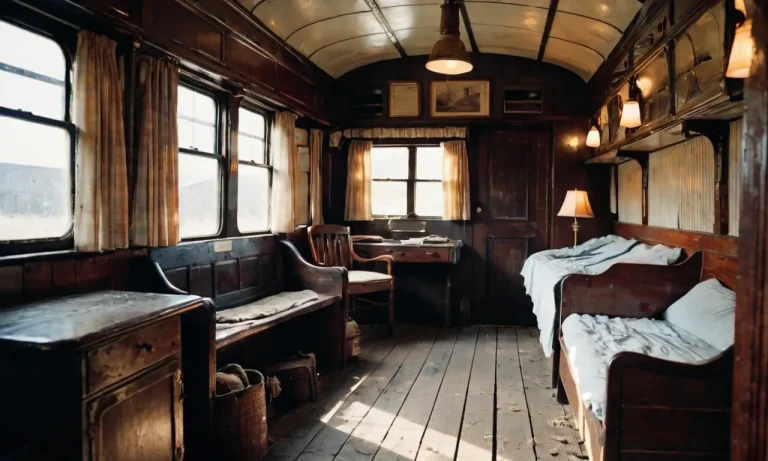How Many Captains Are On A Cruise Ship?
Cruise ships are complex operations that require experienced leadership to ensure the safety and enjoyment of passengers. If you’ve ever wondered how many captains guide these floating cities, you’ve come to the right place.
In short, there is typically one cruise ship captain supported by a defined leadership hierarchy. However, very large ships may have more than one formal captain.
The Primary Captain
When it comes to cruise ships, the primary captain is the one in charge of navigating the ship and ensuring the safety of all passengers and crew members onboard. This position requires a high level of skill, experience, and knowledge of maritime laws and regulations.
Responsibilities and Qualifications
The primary captain is responsible for overseeing the overall operation of the cruise ship, including navigation, communication, and emergency procedures. They are also responsible for making sure the ship complies with all safety regulations and protocols.
In addition, the captain is the ultimate authority on board and is responsible for making important decisions regarding the ship and its passengers.
To qualify as a primary captain, individuals must typically have extensive experience as a ship officer and hold the necessary certifications and licenses. They must also possess strong leadership and decision-making skills, as well as the ability to remain calm under pressure.
Chain of Command
While the primary captain is in charge of the overall operation of the cruise ship, they are not the only captain on board. Cruise ships often have multiple captains, each with their own specific responsibilities.
These captains may include a first officer, a chief officer, and other officers who are responsible for various areas of the ship’s operation.
The primary captain is at the top of the chain of command and has the final say in all matters related to the ship. However, they work closely with the other captains and officers to ensure the smooth running of the ship and the safety of everyone on board.
It’s important to note that the number of captains on a cruise ship may vary depending on the size and type of the ship. Larger cruise ships may have a larger team of captains and officers to handle the complex operations and ensure the safety of thousands of passengers.
For more information on the responsibilities and qualifications of cruise ship captains, you can visit the Maritime Executive website, which provides valuable insights into the world of cruise ship captains.
Staff Captains
Staff captains play a crucial role in the operation and management of a cruise ship. These highly skilled individuals are responsible for assisting the ship’s captain in overseeing various aspects of the vessel’s operation and ensuring the safety of passengers and crew members.
While the ship’s captain is ultimately in charge, the staff captain works closely with them to ensure smooth sailing and efficient navigation.
Role and Responsibilities
The role of a staff captain involves a wide range of responsibilities. They typically oversee the ship’s deck department, which includes managing the navigation team, monitoring weather conditions, and ensuring the ship adheres to international maritime regulations.
Staff captains also play a vital role in emergency situations, coordinating drills and implementing safety protocols to protect passengers and crew members.
Additionally, staff captains are responsible for managing crew training and development, ensuring that all personnel receive the necessary training to perform their duties effectively. They also oversee the maintenance and upkeep of the ship’s exterior, including the lifeboats, rescue equipment, and other safety systems.
When Multiple Captains are Needed
In certain situations, cruise ships may require multiple captains on board. This can occur during long voyages or when the ship is navigating through challenging waters. Having multiple captains allows for a division of responsibilities and ensures that the ship’s operations are efficiently managed.
For example, on some larger cruise ships, there may be a captain responsible for the overall navigation and another captain overseeing the hotel operations. This division allows each captain to focus on their specific area of expertise, ensuring that both the safety and comfort of passengers are prioritized.
It’s worth noting that the number of staff captains on a cruise ship can vary depending on the size and complexity of the vessel. Some smaller ships may only have one staff captain, while larger ships may have multiple staff captains overseeing different departments.
For more information on the roles and responsibilities of staff captains, you can visit www.cruiseshipjob.com. They provide detailed insights into the requirements and qualifications needed to pursue a career as a staff captain.
Other Officers
Aside from the Captain, there are several other officers who play vital roles in the operation and navigation of a cruise ship. These officers work together as a team to ensure the safety and smooth sailing of the ship. Let’s take a closer look at some of these other officers:
Staff Captain
The Staff Captain is the second-in-command on a cruise ship and assists the Captain in overseeing the overall operation of the vessel. They are responsible for managing the crew, ensuring that all safety protocols are followed, and handling any emergencies that may arise.
The Staff Captain also plays a crucial role in maintaining communication with the shore authorities and other ships in the vicinity.
First Officer
The First Officer, also known as the Chief Officer or Chief Mate, is responsible for the navigation of the ship. They work closely with the Captain to plan the ship’s route, monitor weather conditions, and ensure the safe passage of the vessel.
The First Officer also supervises the deck crew and oversees the loading and unloading of cargo and passengers.
Second Officer
The Second Officer is responsible for maintaining the ship’s navigational charts and equipment. They assist the First Officer in monitoring the ship’s position and ensuring that it stays on course. The Second Officer is also in charge of the ship’s safety equipment, such as lifeboats and life rafts, and conducts regular drills to ensure that the crew is prepared for any emergency situations.
Third Officer
The Third Officer, also known as the Second Mate, supports the First and Second Officers in their duties. They assist with navigational tasks, conduct regular safety inspections, and oversee the training of the deck crew.
The Third Officer also plays a crucial role in maintaining the ship’s security, ensuring that all access points are properly monitored and controlled.
These officers work together as a cohesive team to ensure the smooth operation of a cruise ship. Each officer has their specific responsibilities and areas of expertise, but they all share a common goal: to provide a safe and enjoyable experience for passengers on board.
The Importance of Teamwork
When it comes to operating a cruise ship, teamwork is essential. This is especially true when it comes to the role of the captain. While there is usually only one captain officially in charge of the ship, there is an entire team of individuals working together to ensure the smooth operation and safety of the vessel.
The Captain’s Role
The captain holds the ultimate responsibility for the ship and its passengers. They are responsible for navigating the ship, making important decisions regarding safety and protocol, and overseeing the crew. However, they cannot do it alone.
The captain relies on a team of officers, engineers, and crew members to carry out their orders and keep the ship running smoothly.
Teamwork in Action
Teamwork is evident throughout the ship, from the bridge to the engine room to the dining areas. Each department has its own set of responsibilities, but they all work together to ensure the overall success of the voyage.
For example, the bridge team, which includes the captain, officers, and navigators, must coordinate their efforts to safely navigate the ship through various weather conditions and crowded ports.
In the engine room, engineers work together to maintain and repair the ship’s systems, ensuring that everything is functioning properly. Meanwhile, the crew members in the dining areas work as a team to provide exceptional service to passengers, coordinating their efforts to deliver meals and create a pleasant dining experience.
The Benefits of Teamwork
Teamwork is crucial on a cruise ship for several reasons. Firstly, it promotes efficiency and productivity. When individuals work together as a team, tasks can be completed more quickly and effectively.
This is especially important in emergency situations where quick thinking and coordinated action can save lives.
Secondly, teamwork fosters a positive and supportive work environment. By working together towards a common goal, crew members can build strong relationships and trust among each other. This leads to increased morale and job satisfaction, ultimately resulting in better service and a more enjoyable experience for passengers.
Lastly, teamwork ensures safety. Cruise ships are complex and require the expertise of multiple individuals to operate safely. When everyone works together and communicates effectively, potential risks can be identified and addressed promptly, minimizing the likelihood of accidents or incidents.
Conclusion
While there is typically only one captain in charge of a cruise ship, a full leadership team supports safe operations. Larger ships may have multiple formal captains to accommodate more passengers. But regardless of title, successful cruise journeys depend on all officers and crew working together seamlessly.








